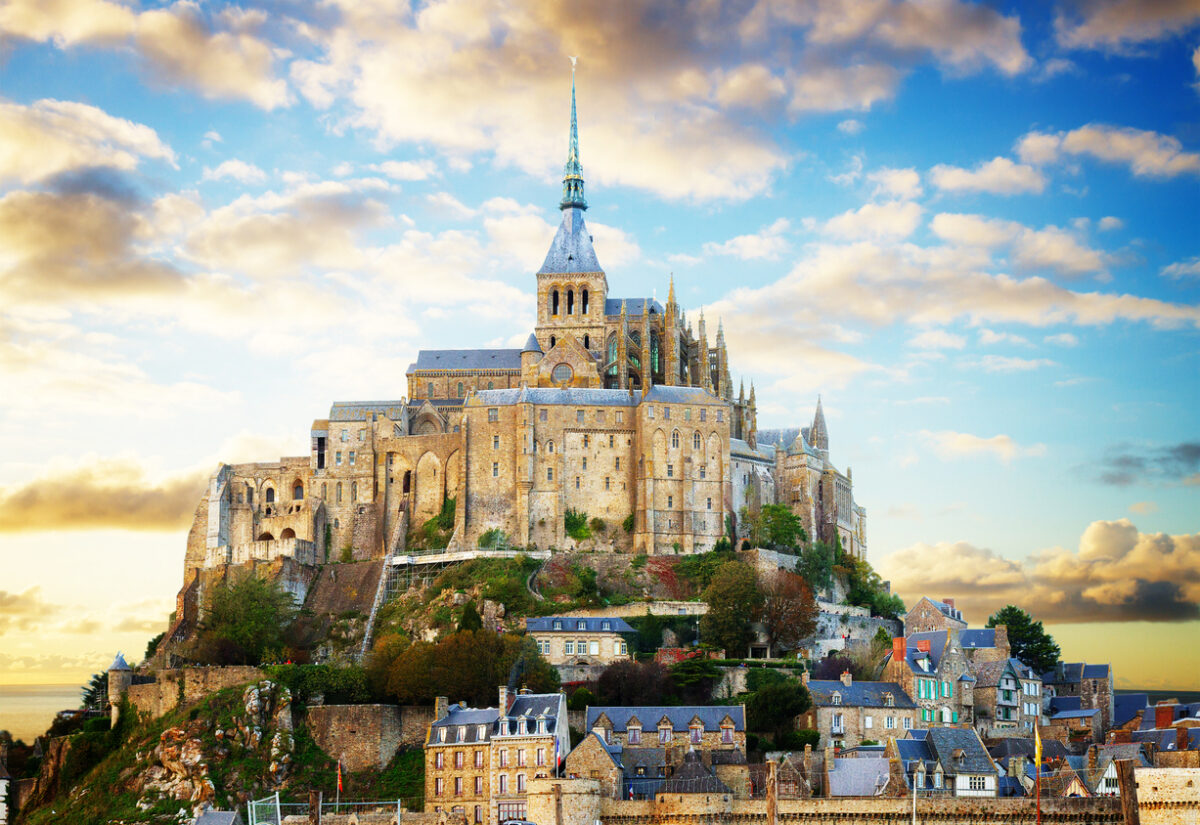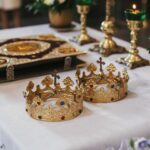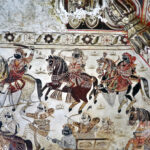Medieval Castle Features That Had Nothing To Do With Defense
- Jennifer Still
- May 15, 2025
 Getty Images/iStockphoto
Getty Images/iStockphotoWhen people imagine medieval castles, the first things that usually spring to mind are thick stone walls, battlements, arrow slits, and drawbridges. These defensive features were undeniably important, especially during times of war or political upheaval. But castles weren’t just about defence. Many of them also served as luxurious homes, social hubs, and displays of influence. As time went on and military threats began to fade, or at least become less constant, many features in castles shifted away from the purely practical and took on a more decorative, symbolic, or domestic role. Here are some of the most interesting and unexpected medieval castle features that had little or nothing to do with protecting the place from attack.
Decorative towers that served no military purpose
Yes, some towers were defensive necessities, perfect for spotting incoming enemies or launching arrows from height. But not all towers were built with that in mind. As castles became more about status and style, owners added extra towers that didn’t really serve any military function. These “vanity towers” were often rounded or polygonal, rising high above the castle’s main structures, offering impressive views and making the whole building look more formidable, even if the towers themselves weren’t manned or usable in battle. They made for great talking points and added drama to the castle’s silhouette, but they were more about show than strategy.
Fancy stonework and carved detailing
Some of the most beautiful and elaborate parts of a castle were completely unnecessary from a structural or military point of view. Carved archways, intricate lintels, detailed cornices, and flourishes like gargoyles or grotesques weren’t there to ward off enemies—they were there to impress visitors. These artistic elements showcased the skills of master stonemasons and told everyone that the castle’s owner had the money and power to afford such decorative touches. In many cases, carvings included religious symbols, family crests, or scenes from mythology, offering a glimpse into the owner’s identity, beliefs, and ambitions.
Large windows and stained glass
In genuinely fortified castles, windows were tiny slits, just wide enough to shoot an arrow through, but narrow enough to keep attackers out. However, as times became more peaceful, especially in the later Middle Ages, many castle builders started adding much larger windows, often filled with stained glass. These colourful additions flooded the rooms with light and gave interiors a much grander feel. Of course, large windows were far less defensible and could easily be broken during an attack, but by then, comfort and visual appeal had taken precedence. In some cases, stained glass was used to depict religious figures, heraldry, or even scenes from daily life, turning the windows into status symbols as much as functional features.
Banquet halls built for feasting and ceremony
Every castle needed a great hall, but its purpose wasn’t to defend the structure—it was to host people. The great hall was the beating heart of castle life: a space for feasting, meetings, ceremonies, and dispensing justice. These halls were often vast, with high wooden beams, grand fireplaces, and walls draped in rich tapestries to show off wealth and help with insulation. Chandeliers, stained glass, and long trestle tables added to the grandeur. Hosting large banquets and entertaining important guests was a key part of noble life, and the more impressive the hall, the more respected the host. These spaces had everything to do with influence and very little to do with warfare.
Private chapels for worship and prestige
Religion played a huge role in medieval life, and many castles had private chapels built into them. These weren’t hidden strongholds or emergency shelters—they were spiritual sanctuaries. Having your own chapel allowed a noble family to worship without having to leave the safety and privacy of their home. It also sent a message about the owner’s piety and status. Some chapels were richly decorated with painted ceilings, stone carvings, and expensive altarpieces. Priests might be employed full-time to lead services just for the household. In some cases, these chapels became burial places for family members, turning them into sacred spaces with deep emotional and symbolic importance.
Lavish kitchens and buttery rooms
A castle that hosted dozens or even hundreds of people needed to keep everyone fed, and that meant having extensive kitchen facilities. These were usually located in a separate wing or building to reduce fire risk, and they could be huge. Kitchens might contain several fireplaces, large cauldrons, spit roasts, and bread ovens. They were supported by storage areas like the buttery (for drinks), pantry (for dry food and bread), and larder (for meat and dairy). These were purely functional spaces, vital for feeding everyone from the lord to the lowest servant. A well-equipped kitchen wasn’t a defensive asset, but it was a practical necessity, and a sign of an efficient household.
Gardens, orchards and deer parks
While moats and defensive walls protected the castle itself, the surrounding land often featured landscaped gardens, orchards, and game parks. These weren’t for tactical advantage. They were for pleasure, food, and prestige. Formal gardens with shaped hedges, walkways, fountains, and exotic plants were particularly popular later in the medieval period. Orchards provided apples, pears, and nuts, while deer parks allowed the nobility to hunt on their own land—a popular pastime and a symbol of high status. Having the space and resources to maintain such features showed off a landowner’s wealth and control over nature, rather than their ability to repel an invading force.
Privies and garderobes
Let’s talk toilets. While not exactly glamorous, sanitation was important, especially in a stone castle filled with people. Garderobes were medieval toilets—usually stone or wooden seats built into walls, often with a vertical shaft dropping down into a pit or moat. Some even had rudimentary plumbing, using rainwater to flush waste away. These features weren’t defensive in any way, but they were essential for daily life. A castle with decent sanitation was a more pleasant place to live and showed a level of sophistication and planning. It also helped reduce the risk of disease, which was just as dangerous as any sword.
Solar rooms for comfort and privacy
The solar was a private room, typically reserved for the lord and lady of the house. Located upstairs to catch the sun, hence the name, it was a warm, quiet retreat away from the bustle of the great hall. Solars were used for reading, embroidery, private meetings, and family time. These rooms were often well-decorated, sometimes with fireplaces, painted walls, and windows overlooking the countryside. Their purpose was entirely domestic, designed for relaxation and privacy rather than protection. The presence of a solar indicated that a castle was more than just a fortress; it was a functioning home.
Libraries and studies for education and control
Later medieval castles, especially those belonging to educated nobility or clergy, sometimes included libraries or studies. These weren’t sprawling libraries like we see in modern stately homes, but small rooms lined with books, scrolls, or documents. They reflected a growing interest in education, law, and record-keeping. Having a personal study space signified that the lord took governance, learning, or spirituality seriously. It also allowed sensitive correspondence and planning to be done in private. Again, nothing to do with defence—everything to do with how the castle was managed and what it represented.
Medieval castles were never just about fortification.
While defence was often a top priority in earlier centuries, many features in these buildings had other purposes—some practical, some luxurious, and others purely decorative. As peace gradually returned to parts of Britain and the political landscape stabilised, castles evolved into sophisticated homes with creature comforts, showy features, and symbols of influence and ambition. Today, these less combative elements are part of what makes castle architecture so fascinating. They remind us that even the mightiest stronghold was also a home.



